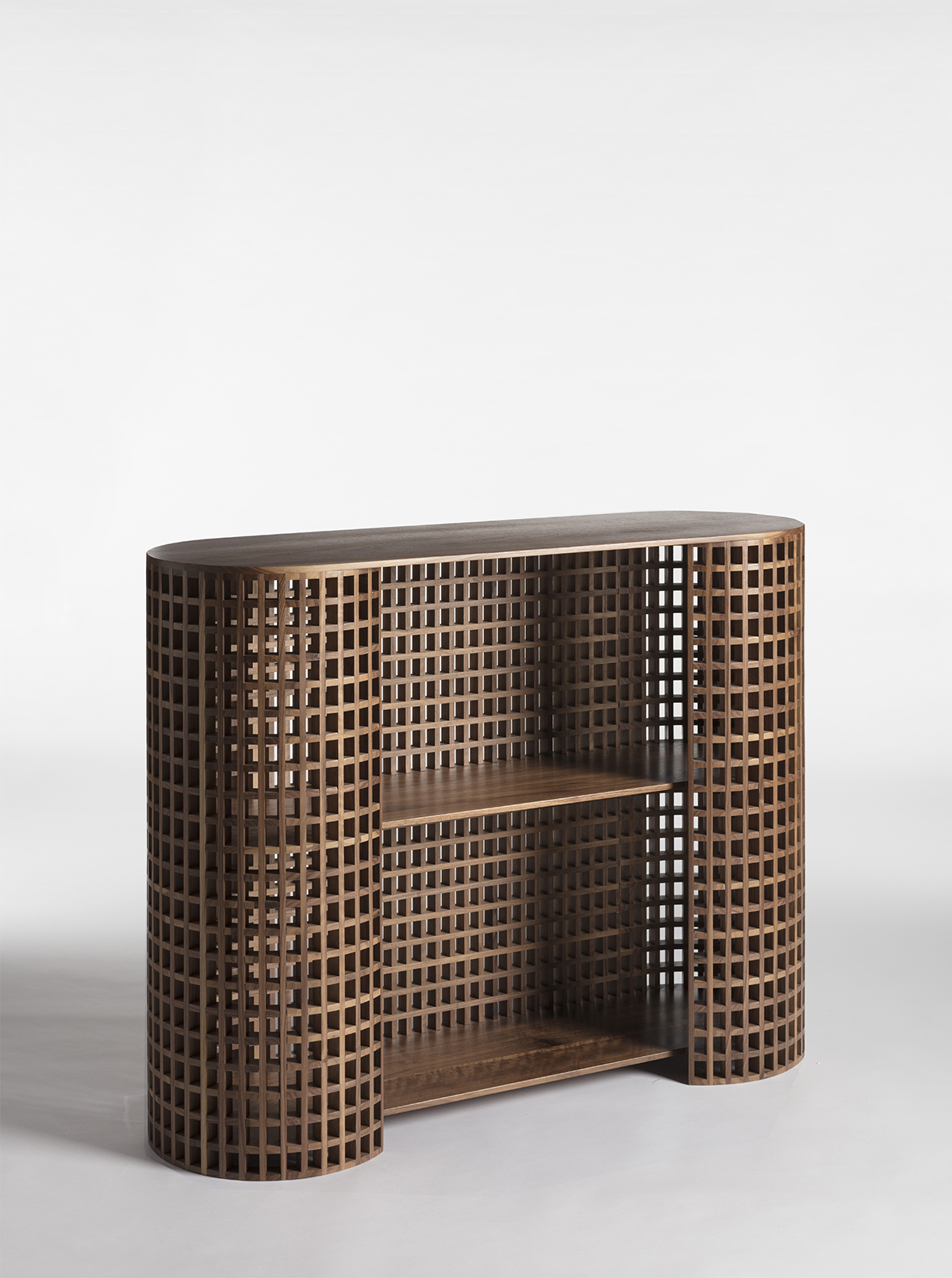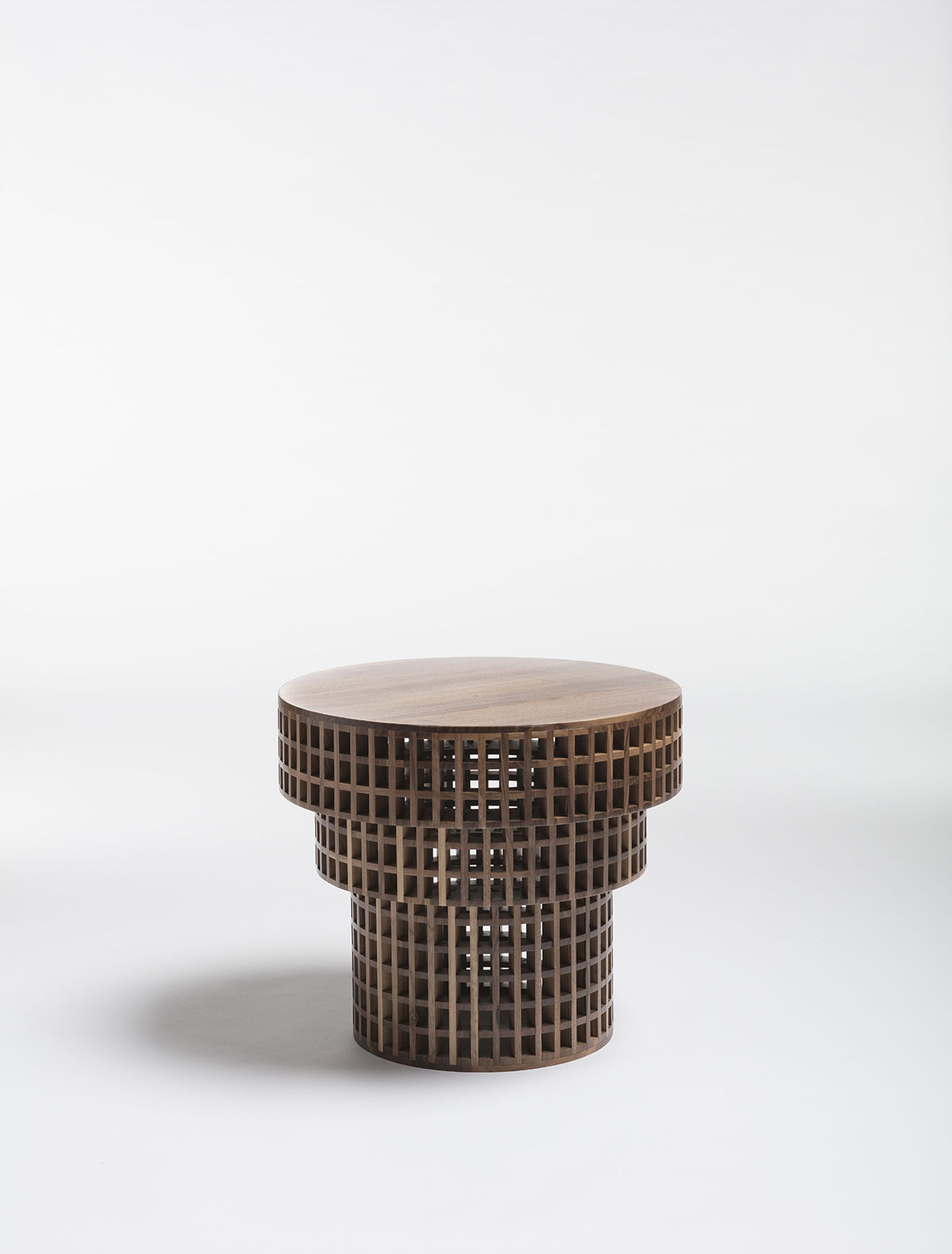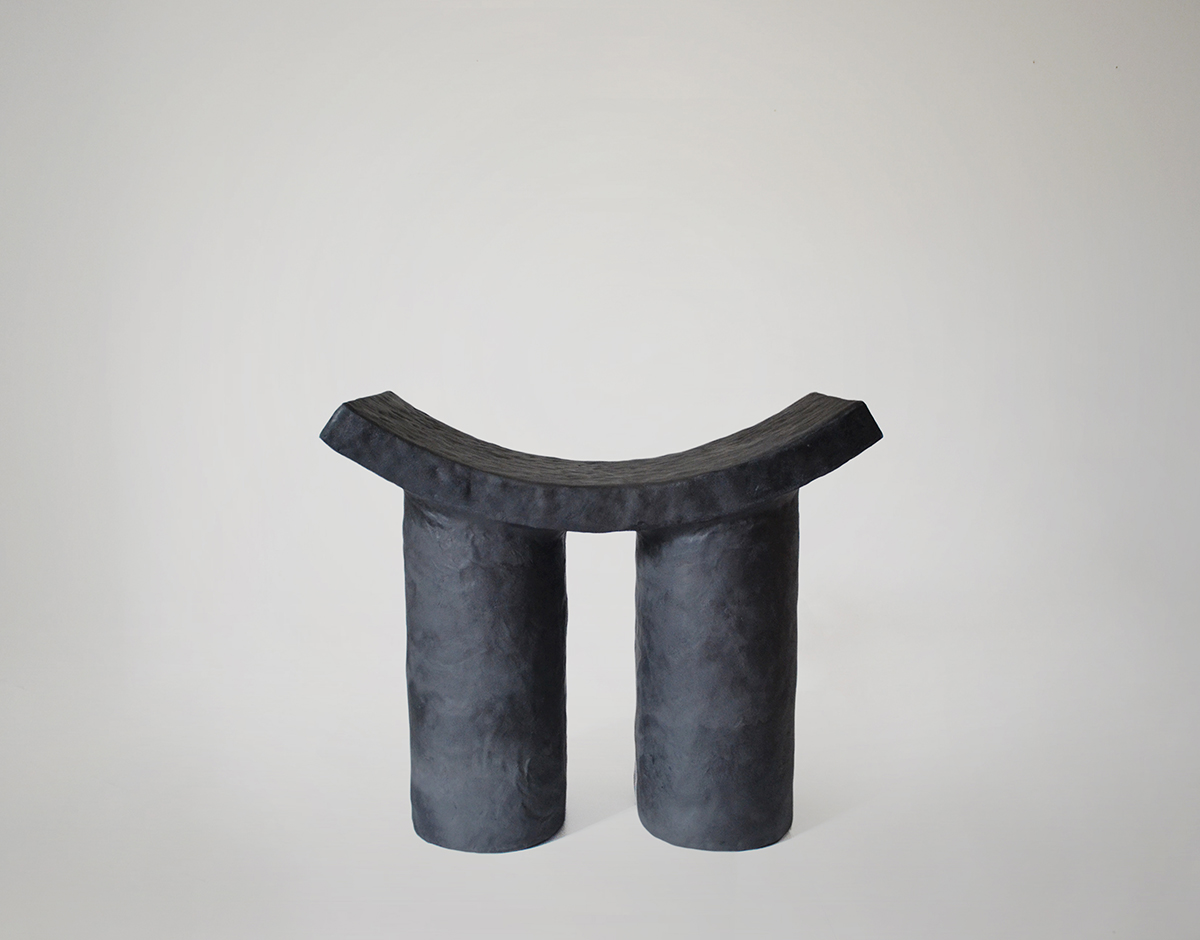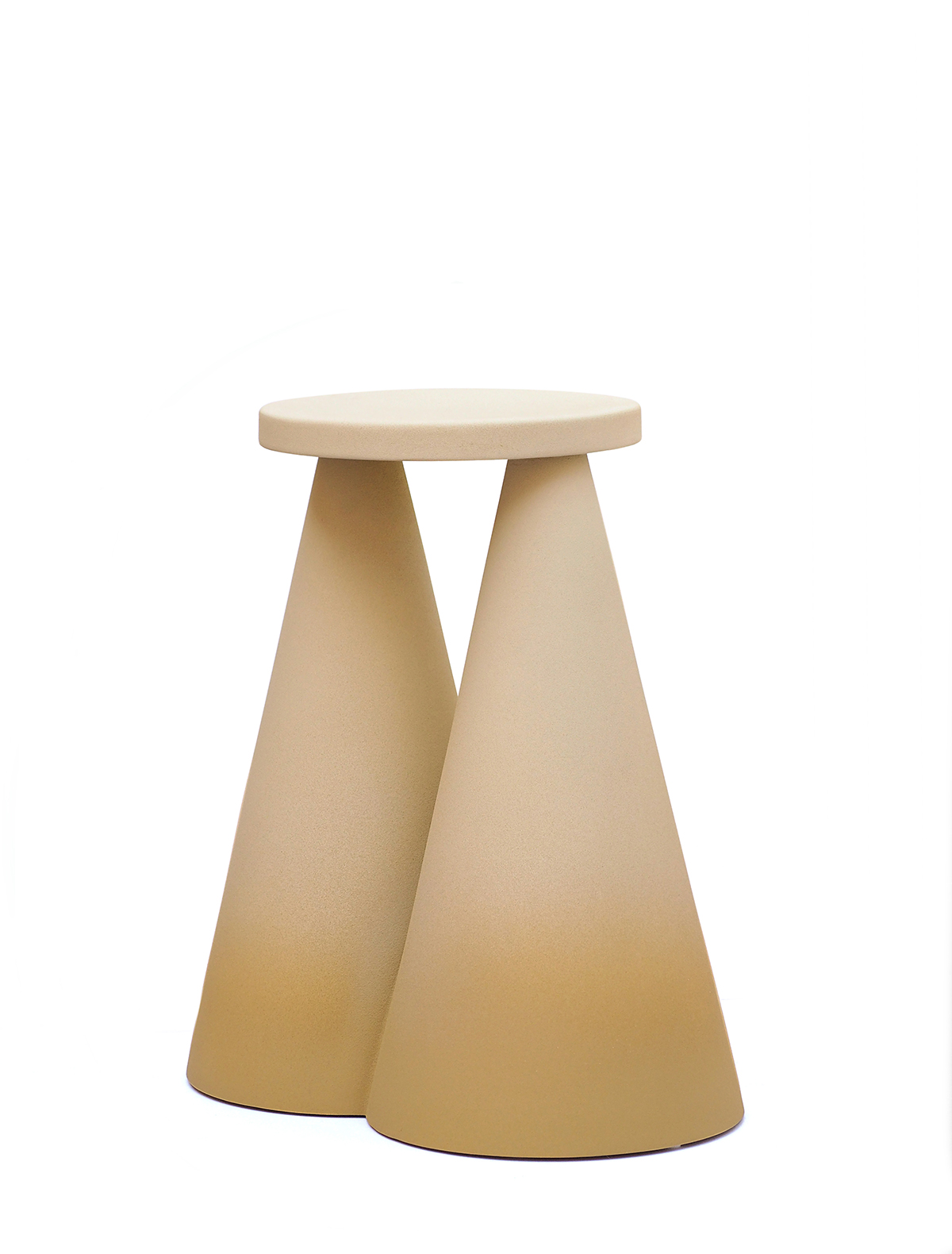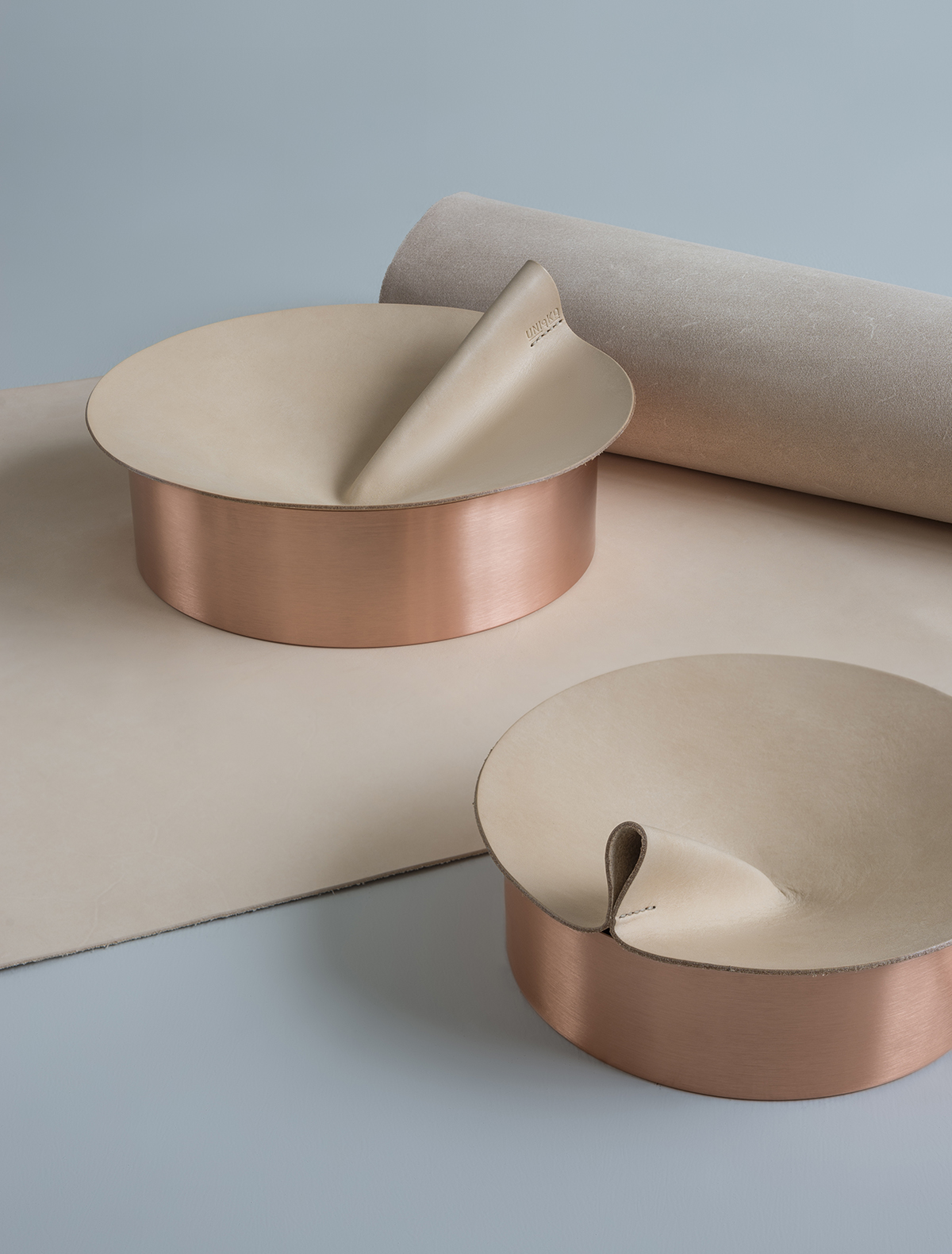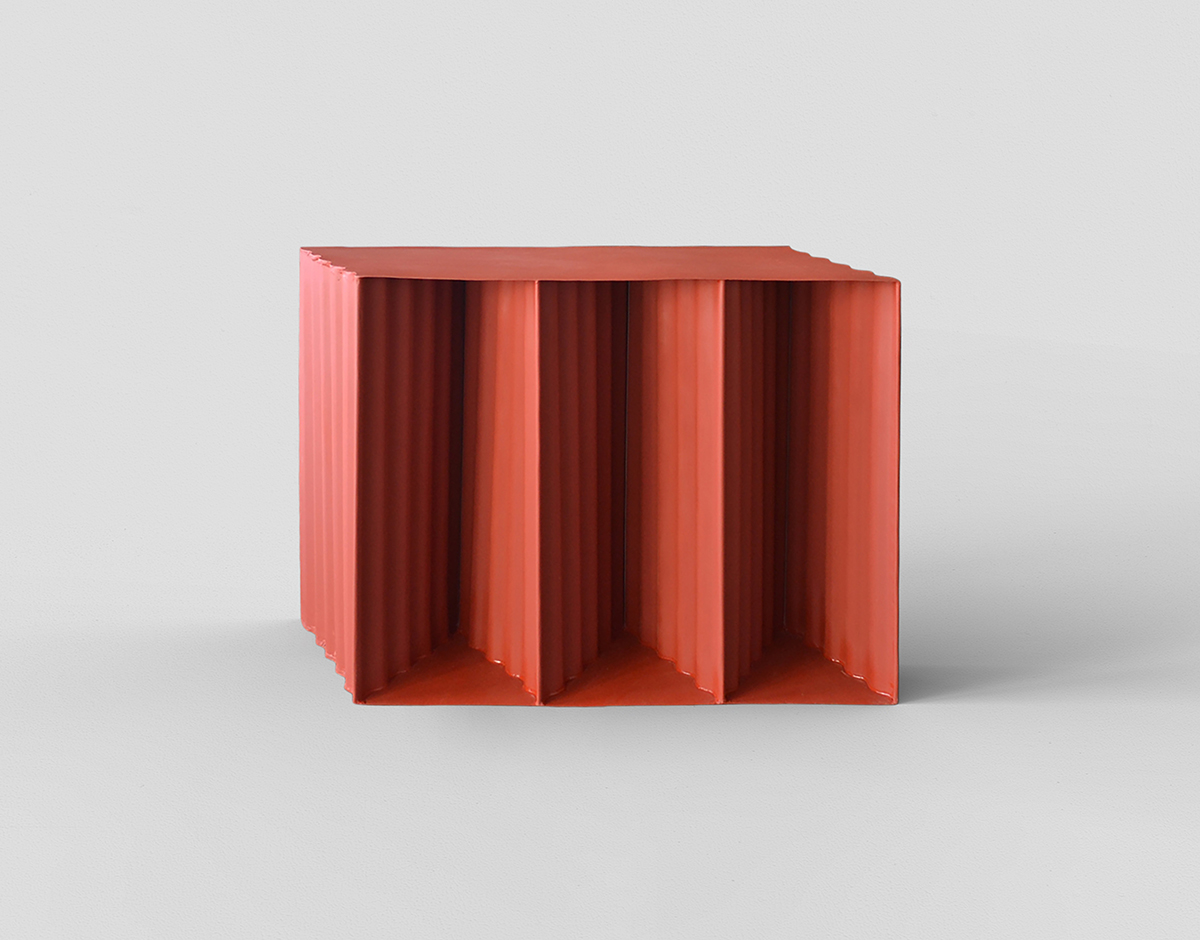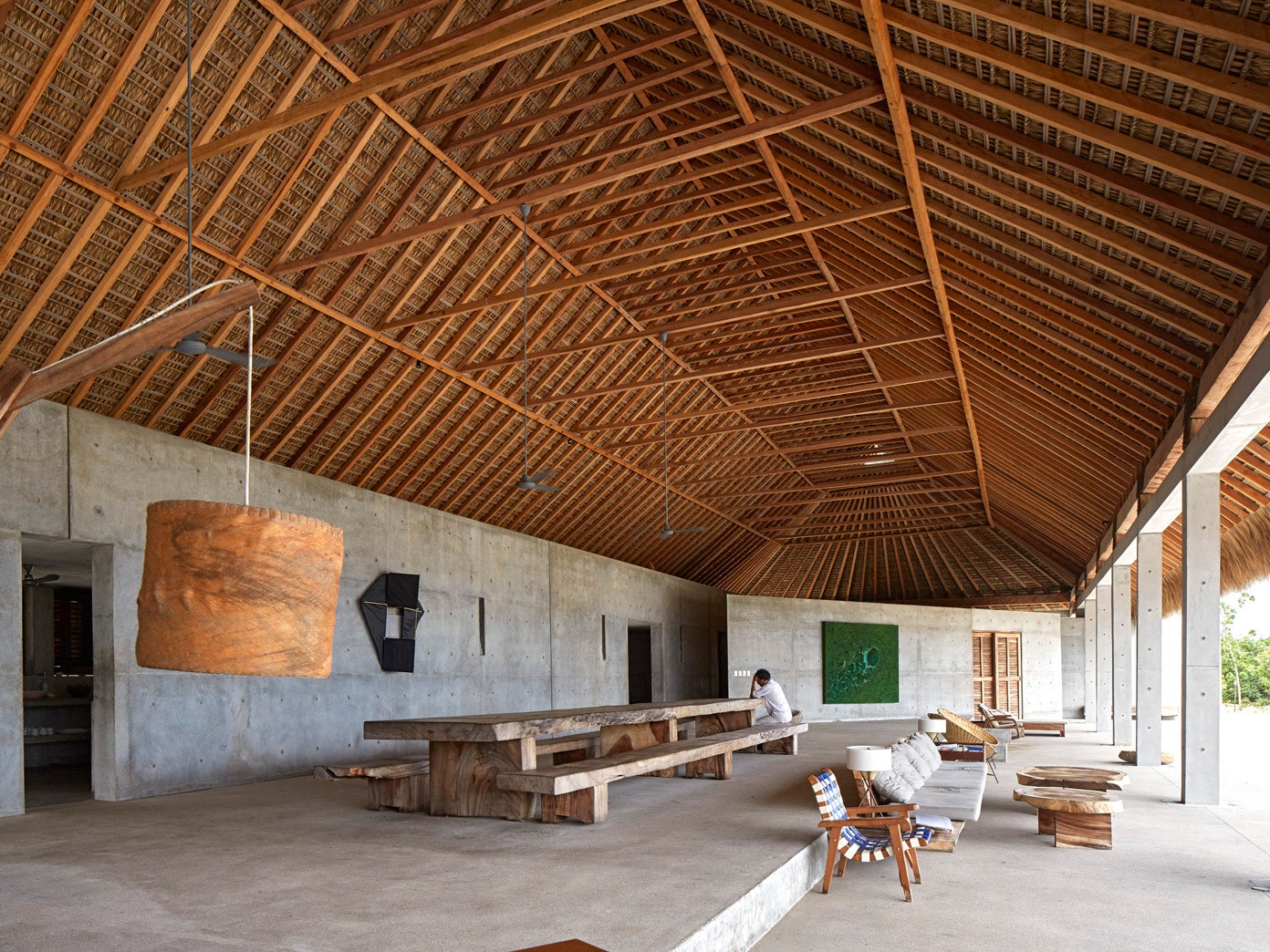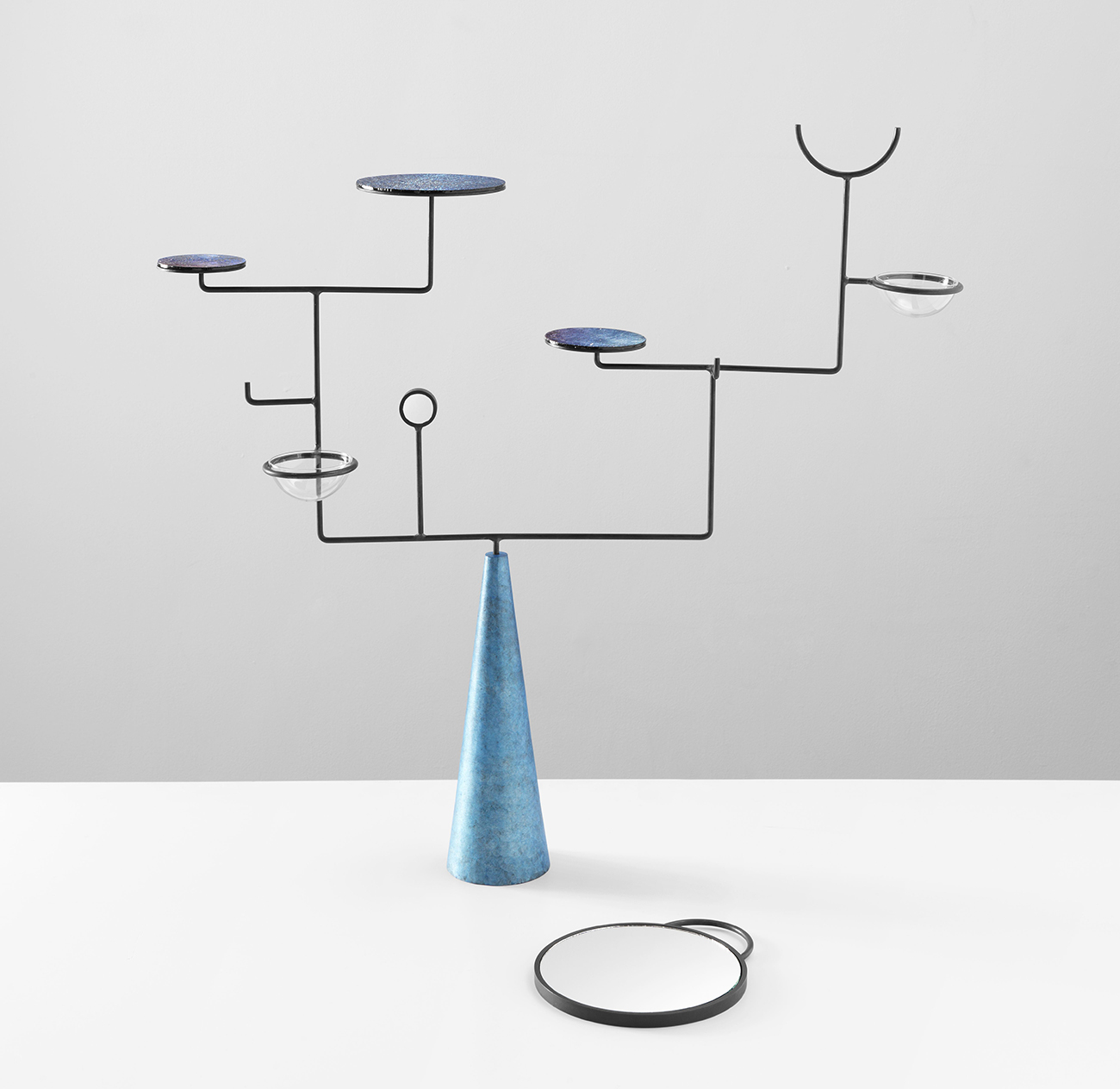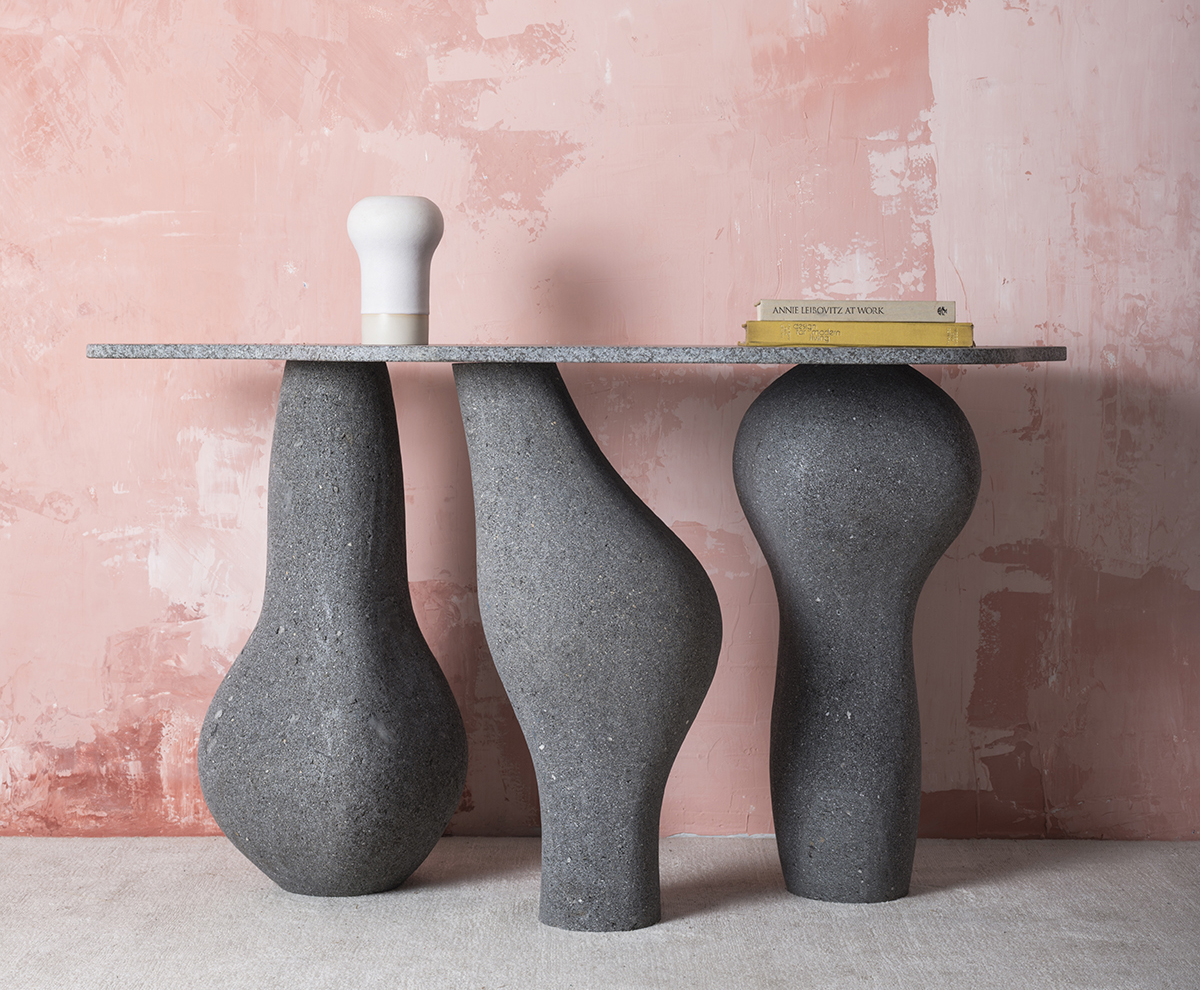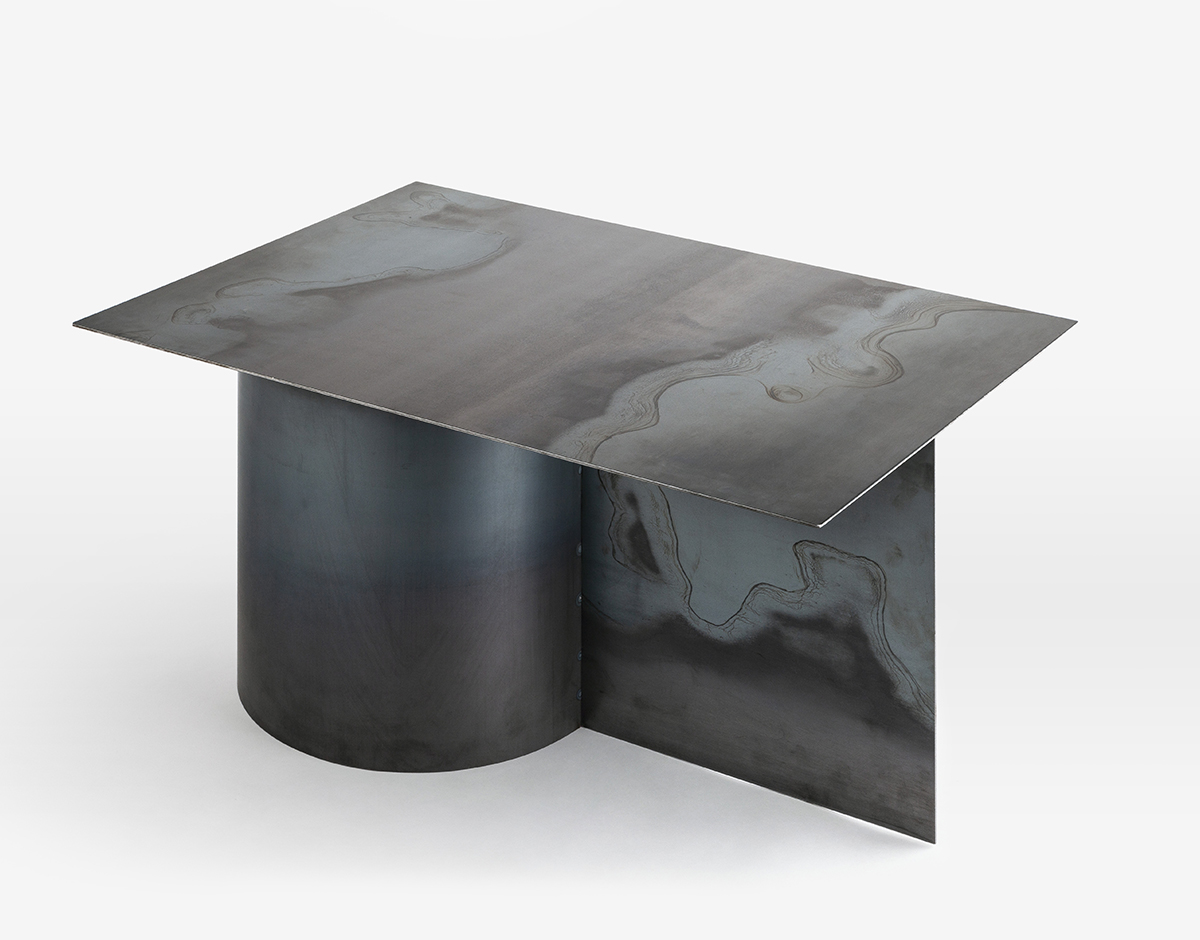
01.22.21
Q+A
Meet Cara\Davide, The South African-Italian Duo Making Waves in Milan
One of Cara Judd and Davide Gramatica of Cara\Davide’s most memorable projects quite literally started in a scrap heap. “We were visiting an artisan who works with metal for another project and we came across a piece of leftover iron with an interesting patina,” says Gramatica of the offcut that would inspire their Calandra collection. “For them, it was rubbish, but between us, we said, why not?”
The artisan explained to Judd and Gramatica that the metal arrives from the supplier with the wavy blue marking they were admiring— a byproduct of the intense heat and oil coating required to smooth it — but that the more vivid the pattern, the less valuable the sheet typically is. “We totally fell in love with those beautiful shapes, so we asked if we could make an order based on the pattern,” says Judd. “Normally it’s not possible, but they eventually let us sneak in the back and choose.” They designed the entire collection — a series comprising a cabinet, table, and bench — around the industrial processes that go into working raw iron sheets, foregrounding the calendering technique in which high-pressure rollers bend and smooth the metal and its distinct welded seams.
This sort of serendipitous design process has become a calling card for the South African/Italian duo. They describe their work as reflexive — less a product of a prescriptive notion of their own practice or a dogged adherence to style, and moreso an open-ended exercise in which they meet materials and makers halfway. Recent collaborations with the Venetian furniture brand Medulum and representation by Aybar Gallery in Miami have set a solid foundation for their quickly growing practice. We sat down with Cara\Davide to talk cross-cultural collaborations, their passion for working with artisans, and solving design problems at the grocery store.
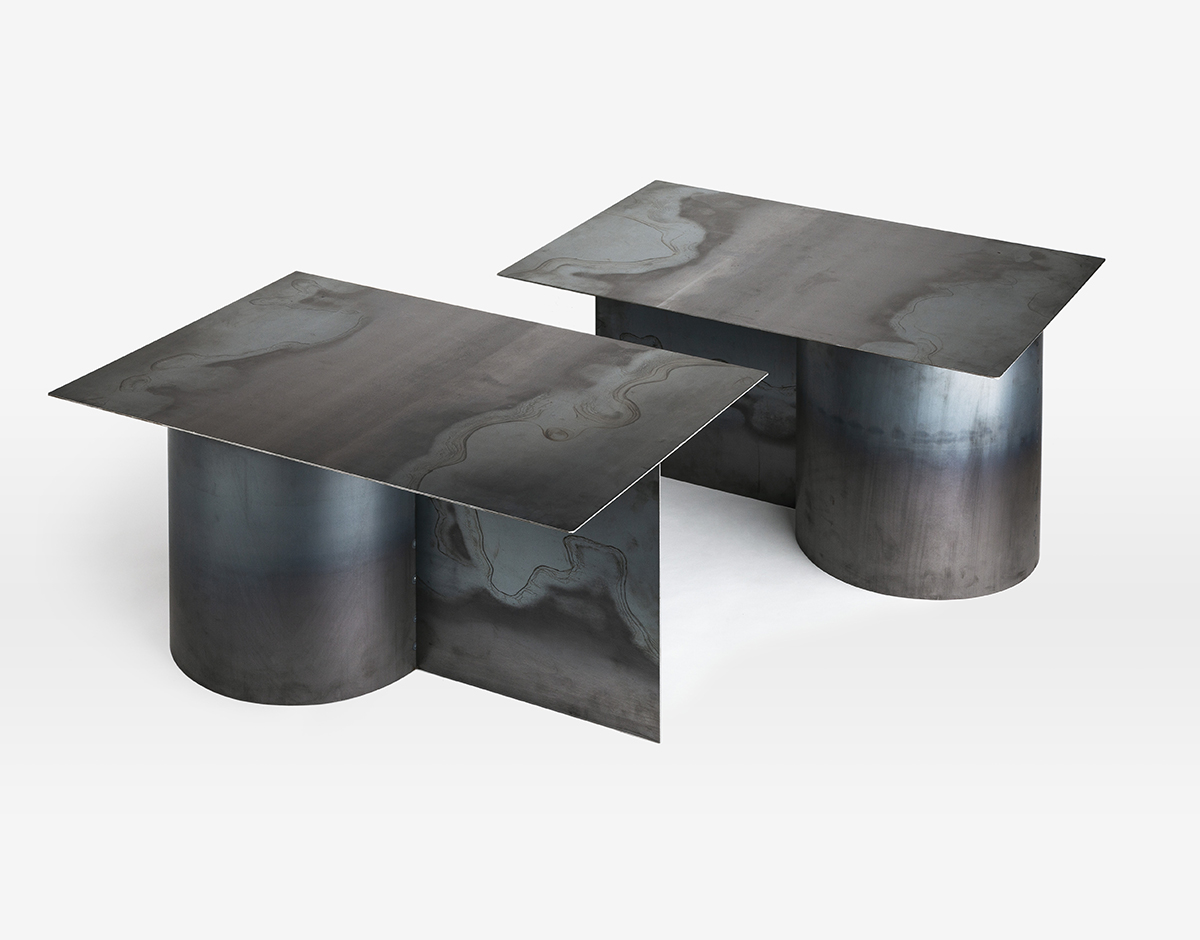
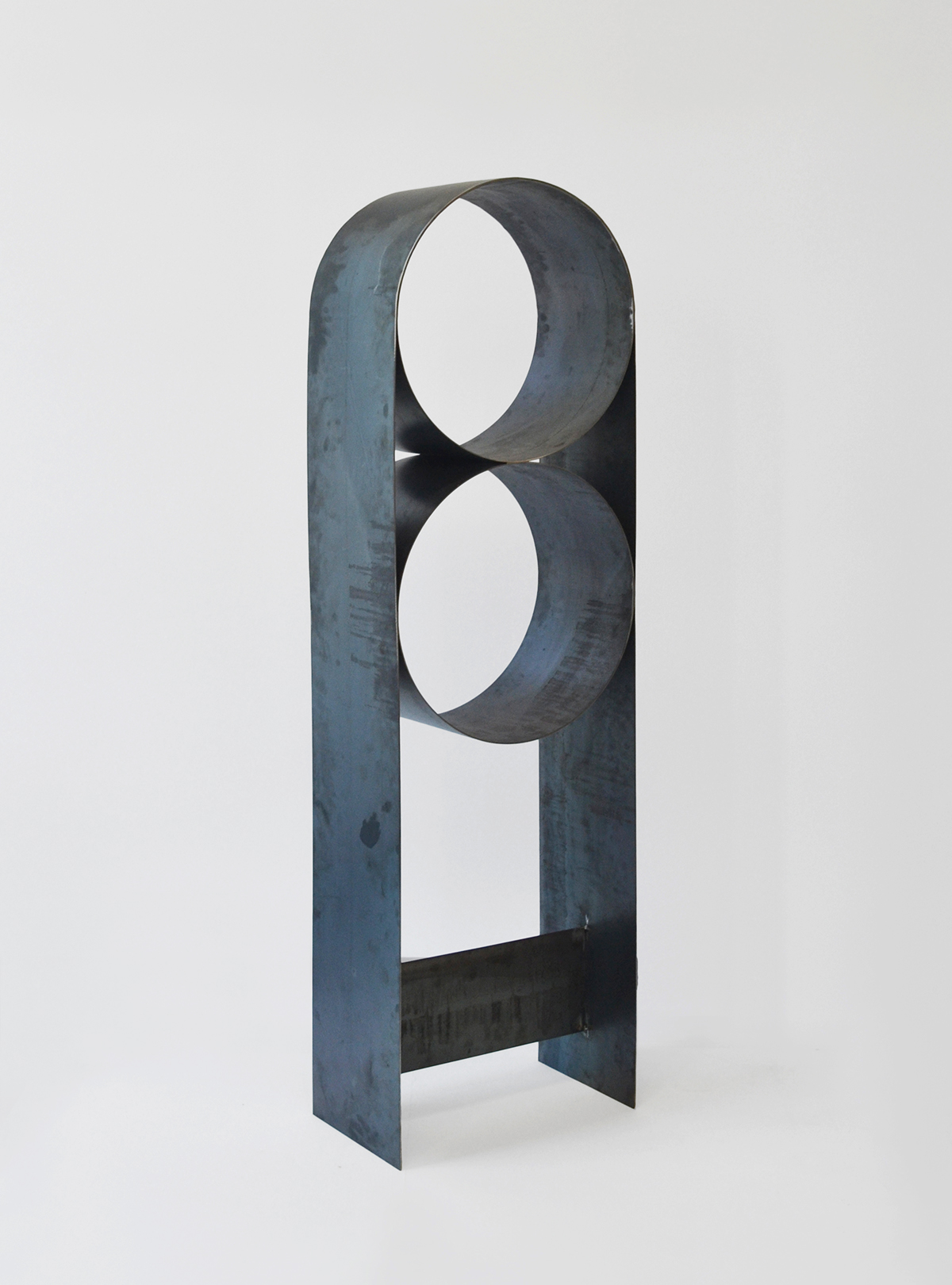
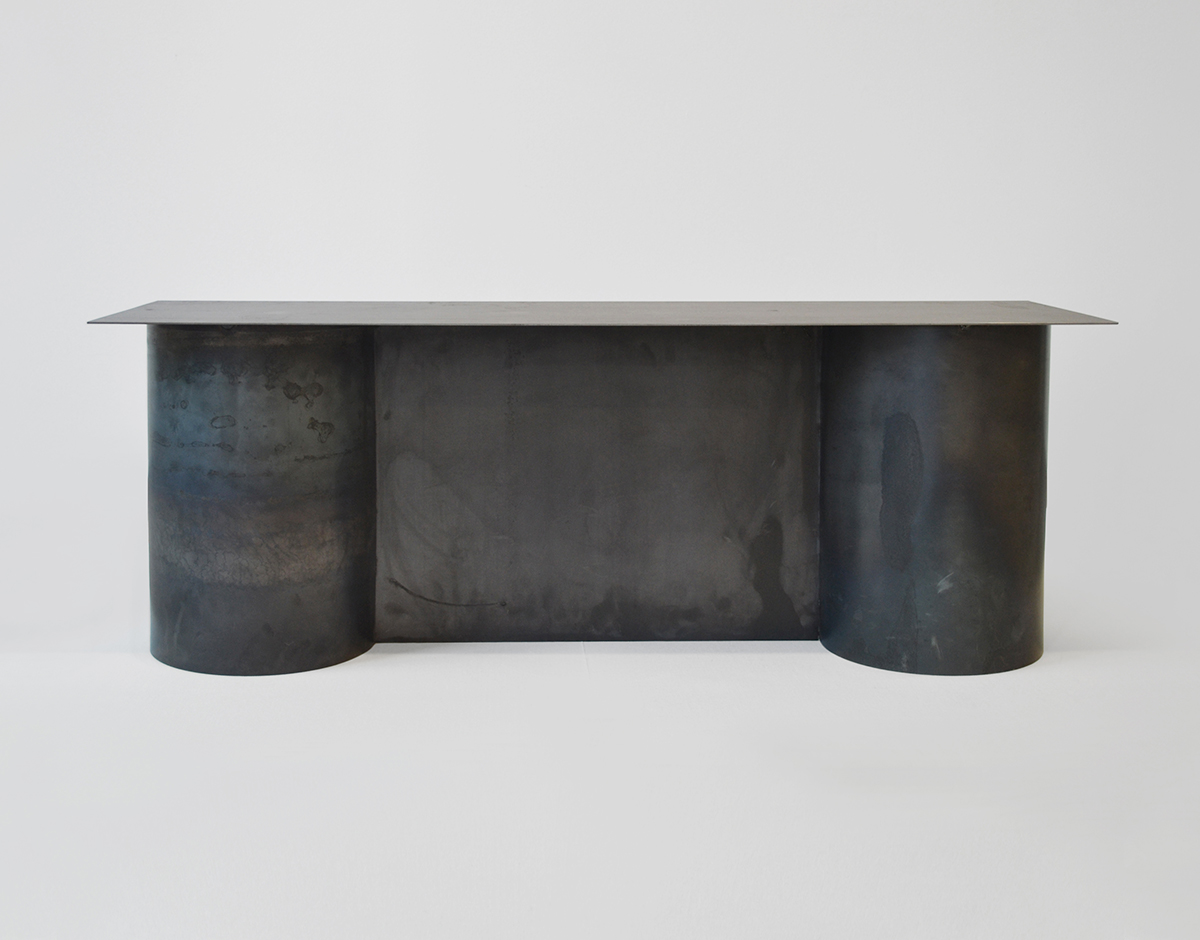
Let’s start from the beginning. How did the two of you meet and what has been your career trajectory so far?
Cara: Davide is from Milan. I’m South African. We met at IED Milan where we both studied industrial design. After graduation, we both went our separate ways in terms of careers. I moved to [central Italian town] Marche to carry out my thesis because it was accepted by a company and I developed the product with them.
Davide: I worked with INODA+SVEJE, who are a Danish and Japanese design duo based in Milan. After two years with them, I moved on to a lab where they produce a lot of prototypes for design and architecture. So I was able to have a lot of hands-on experience.
Cara: Which was basically opposite of what I was doing. I was working in a very industrial company, while Davide was more hands-on in making these prototypes. When I moved back to Milan we were working separately as freelance designers and had our own clients, but in 2016 we decided, since we were always working on projects together and would already share everything, we would just start our own studio together officially. From there, we started working on a few private commissions and our own experimental or self-produced works.
2018 is when we started having a bit more of a structure in our work, when we presented our Territorio Collection for the ‘Africa, Africa’ exhibition in Milan (below). That project tied everything together for us, the fact that we come from different cultures, the fact that we’re both very hands-on, very experimental, and we can benefit from our cultural differences. From there, we discovered our process, because it was a way forward that we could really identify with.
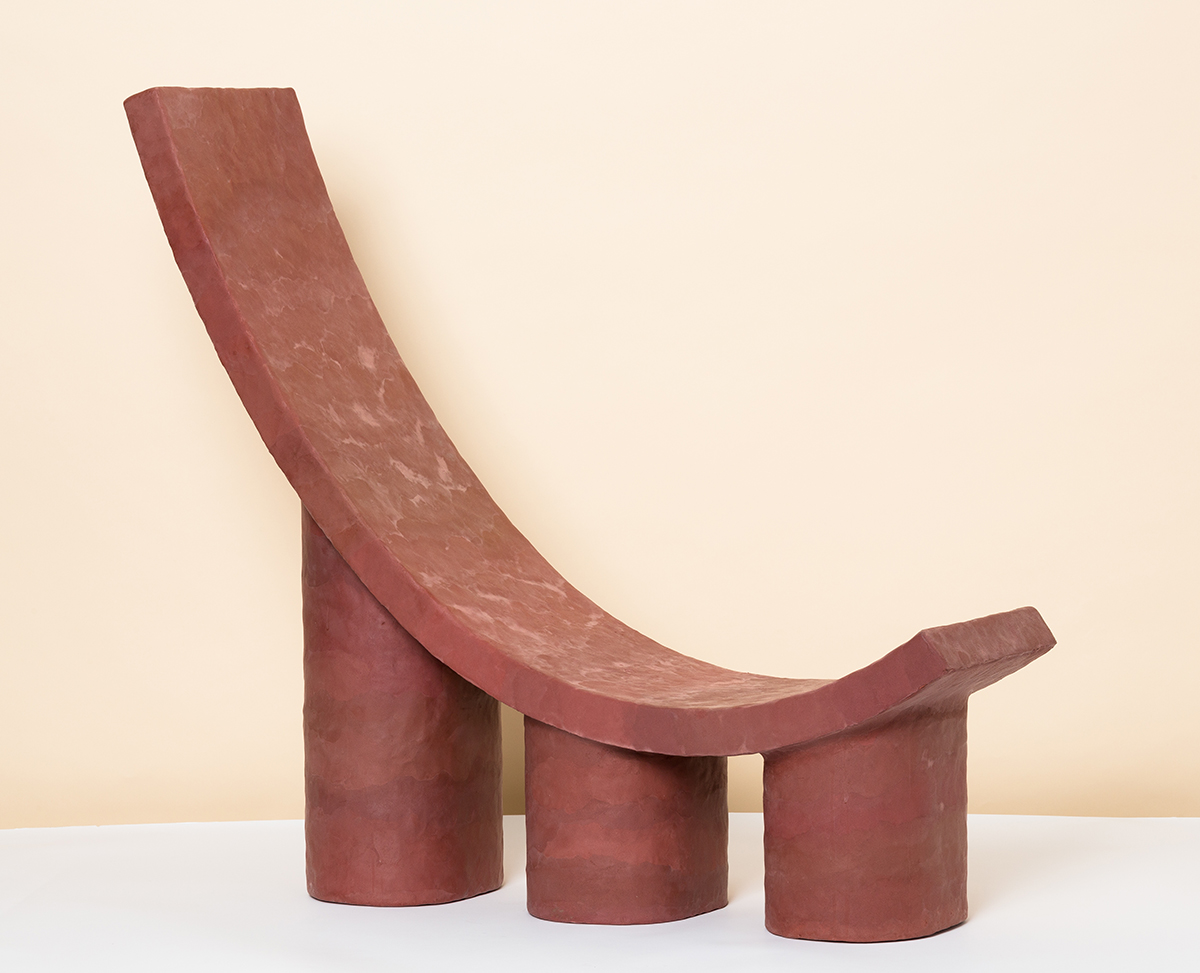
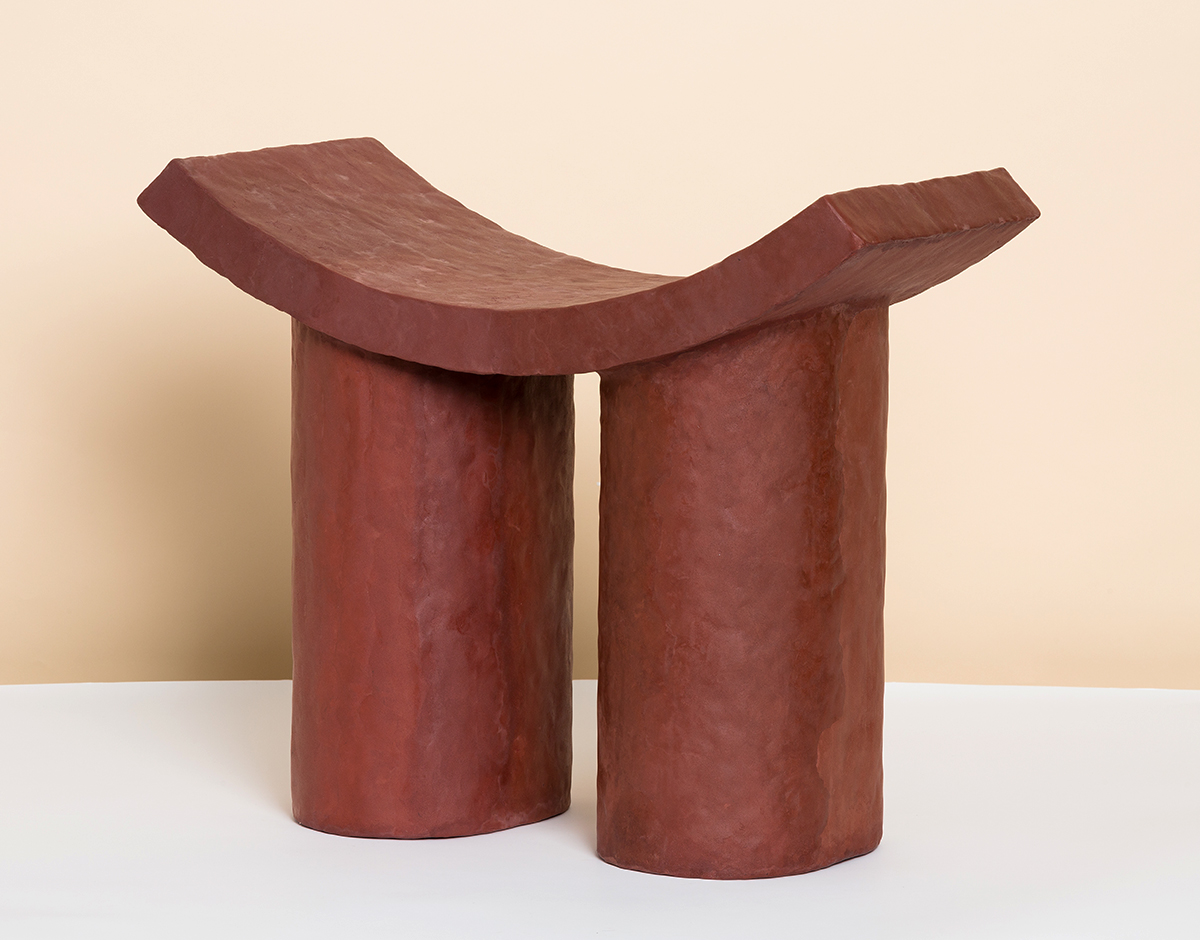
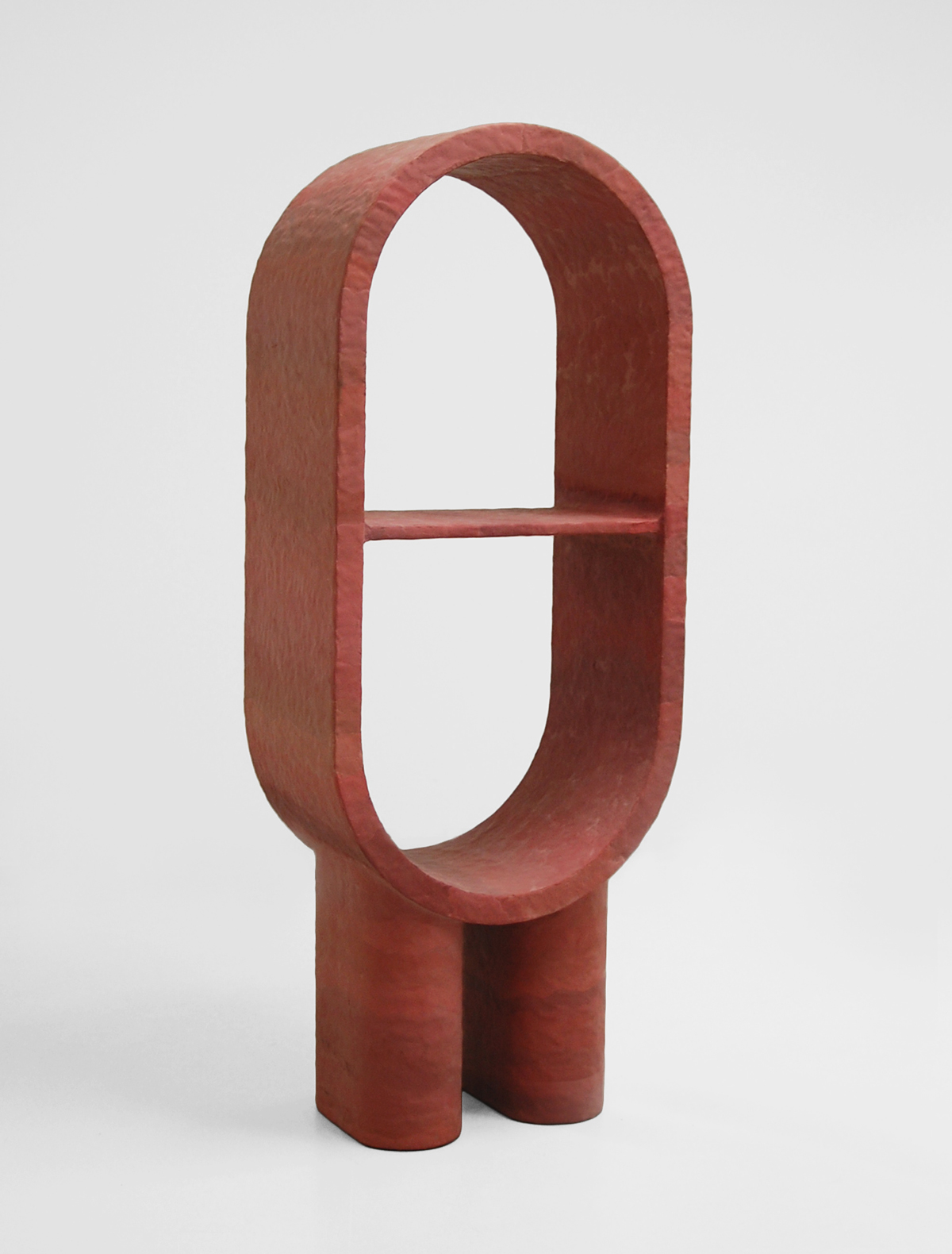
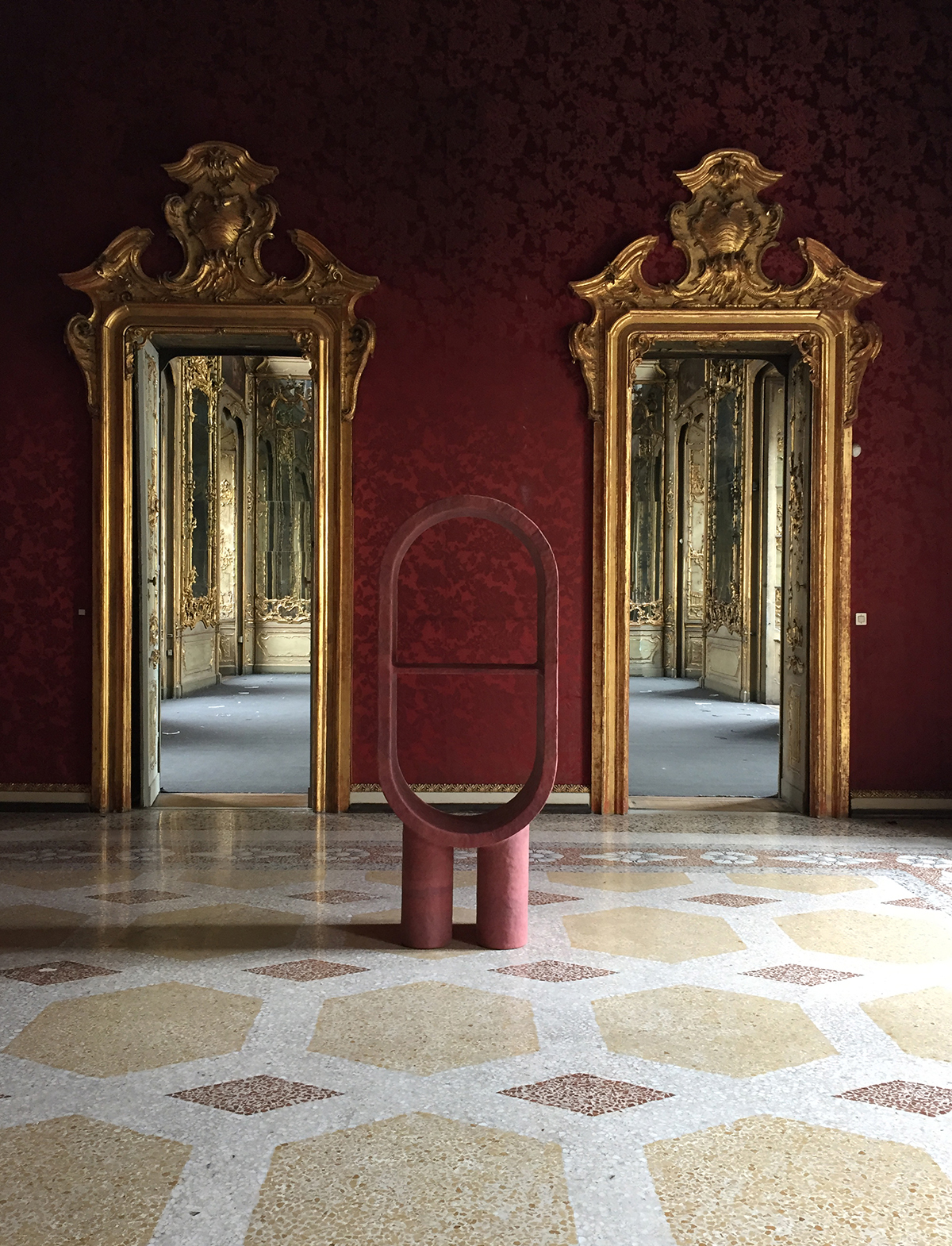
Can you tell me about the ‘Africa, Africa’ project and the research that went into that collection and exhibition?
Cara: The show was organized by the South African consulate in Milan and featured contemporary African designers. We researched African, mainly sub-Saharan African, visual culture. We were looking at the relationship between the artisan and the object, specifically objects made intimately by the person who needs and uses it. For example, the headrest, which was a direct inspiration for the Rest Chair [which was part of the collection exhibited in the show]. It’s an object that gets carved out a big chunk of wood and used as a headrest, so it has a shape that cradles your neck. It’s a small object, but each person makes it from the material that they have in their surroundings. The connection the artisan had with his surroundings and with the material and with his own manner of making was something interesting to us. And the fact that the final design is so related to its context and territory, together with the interest of the person.
How did you translate that idea into the final product?
Cara: We didn’t want to directly replicate it. Since we’re in Milan it was dictated by the industrial elements that were available to us, like PVC tubing and metal rods. We used an epoxy clay on the exterior to give it a hand-carved effect and dyed it a color that reminded us of the richness of African soil.
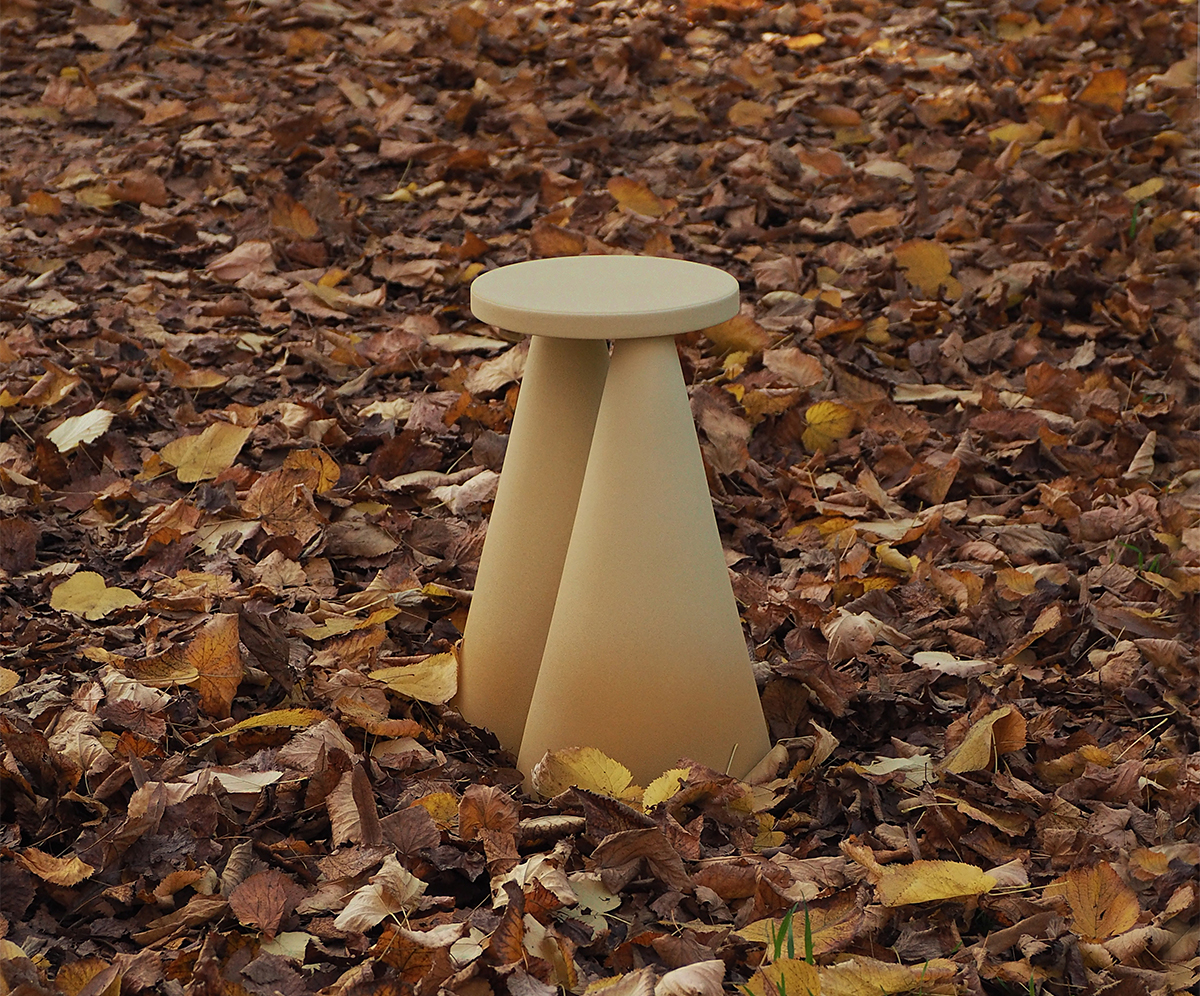
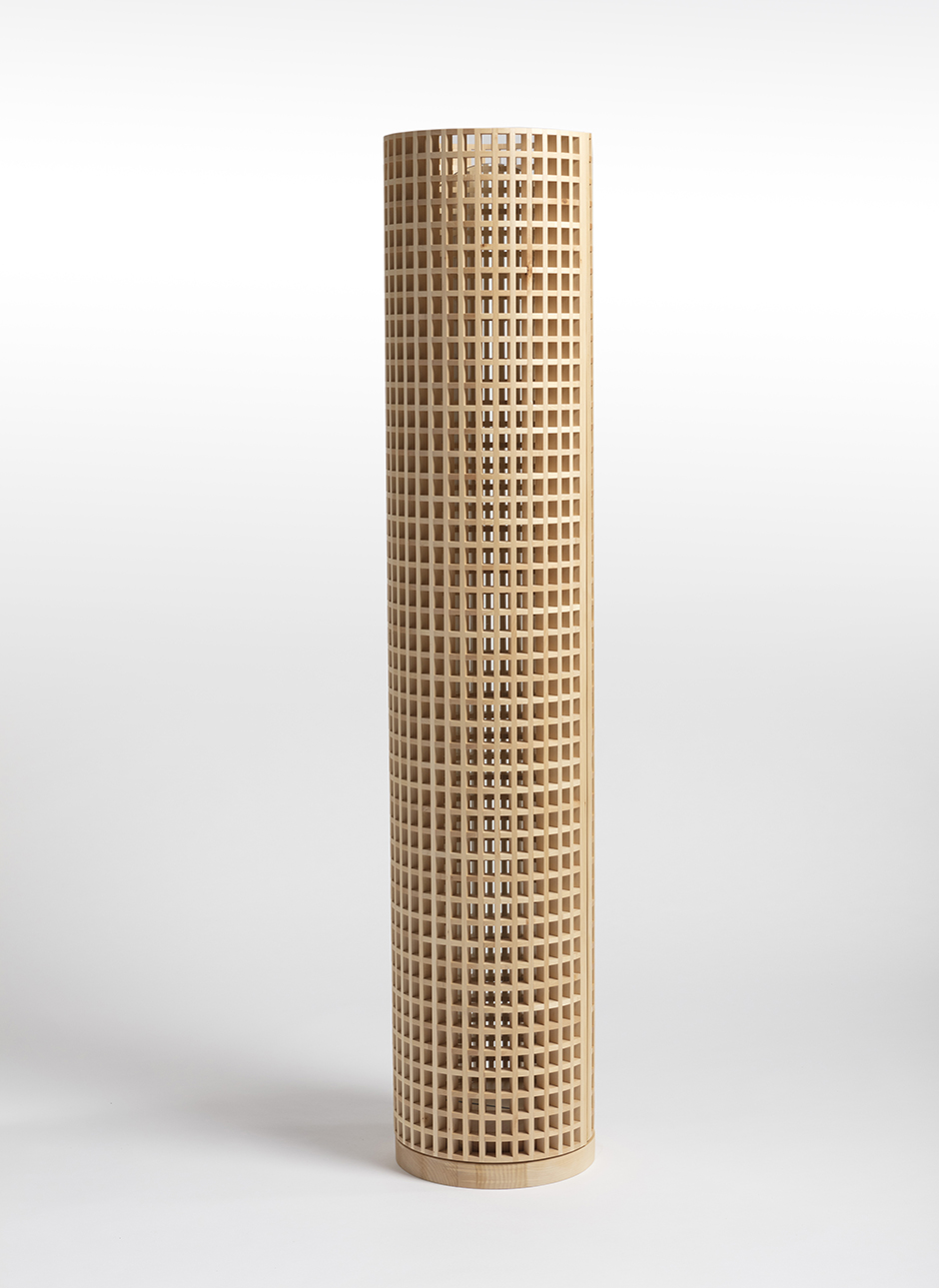
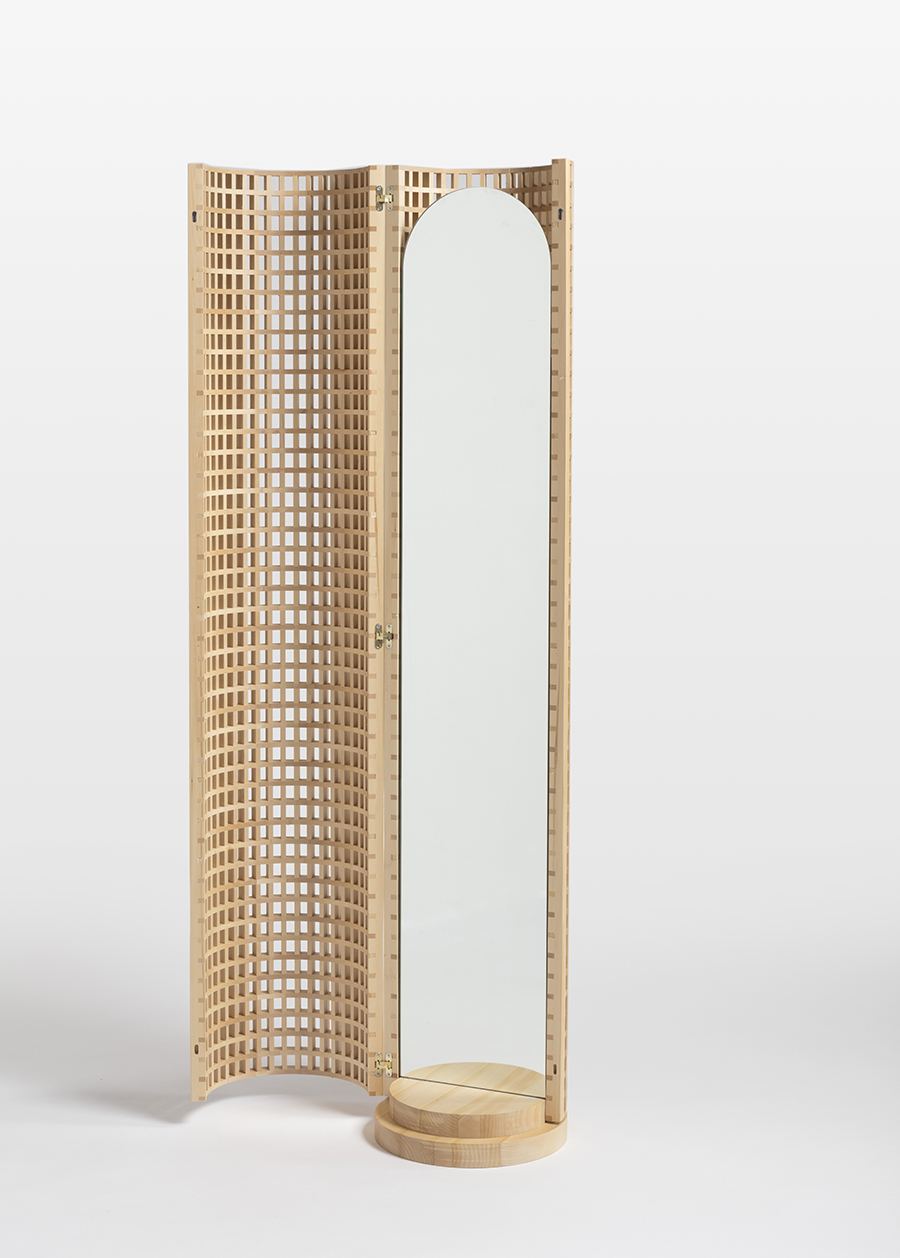
Speaking more generally, how would you describe your own practice?
Davide: I would say a lot of work is unconscious, in the sense that a lot of it comes from our everyday experiences. We discover new processes and get inspiration from traveling and visiting artisans but without necessarily the principle idea of wanting to discover something new. On the other hand, research into social aspects shapes a lot of our work. Reading a lot, following contemporaneity and asking ourselves: how can we look at this from another point of view?
Cara: In a lot of the dialogues we have, for example, when we meet with artisans, we don’t have a set idea of what we want to do, but by speaking with people and discovering little details, we find things that inspire us.
Davide: This inspiration can even come from walking around the city. I know that sounds like a romantic cliche, but, in fact, in the city you have a lot of prototype examples, such as urban furniture. Even seeing a welding system can be interesting for us — it’s like a sample archive.
Can you give us an example of something you came across in the city and how it eventually turned into one of your pieces?
Davide: Of course, our work with Rinascente [an upscale department store in the centre of Milan] is one example. We were doing this kind of retail project for the first time and we wanted to draw on our previous experience working with metal artisans, so we designed a curved tube — sort of like a worm shape — as the base of a clothing rack. We had been discussing it with our supplier on how to produce it, but it seemed impossible. It was a huge struggle and we eventually gave up. We were a bit depressed about it because it was one of the key points in the project notes. But the next time we went grocery shopping at Esselunga [an Italian supermarket chain], we noticed that they have a pipe that goes around the base of the wall so the shopping carts don’t hit it — and it was made in exactly the same way we wanted, but with a different process than we had initially thought. So we took some photos and brought it to our supplier and we were able to produce the element.
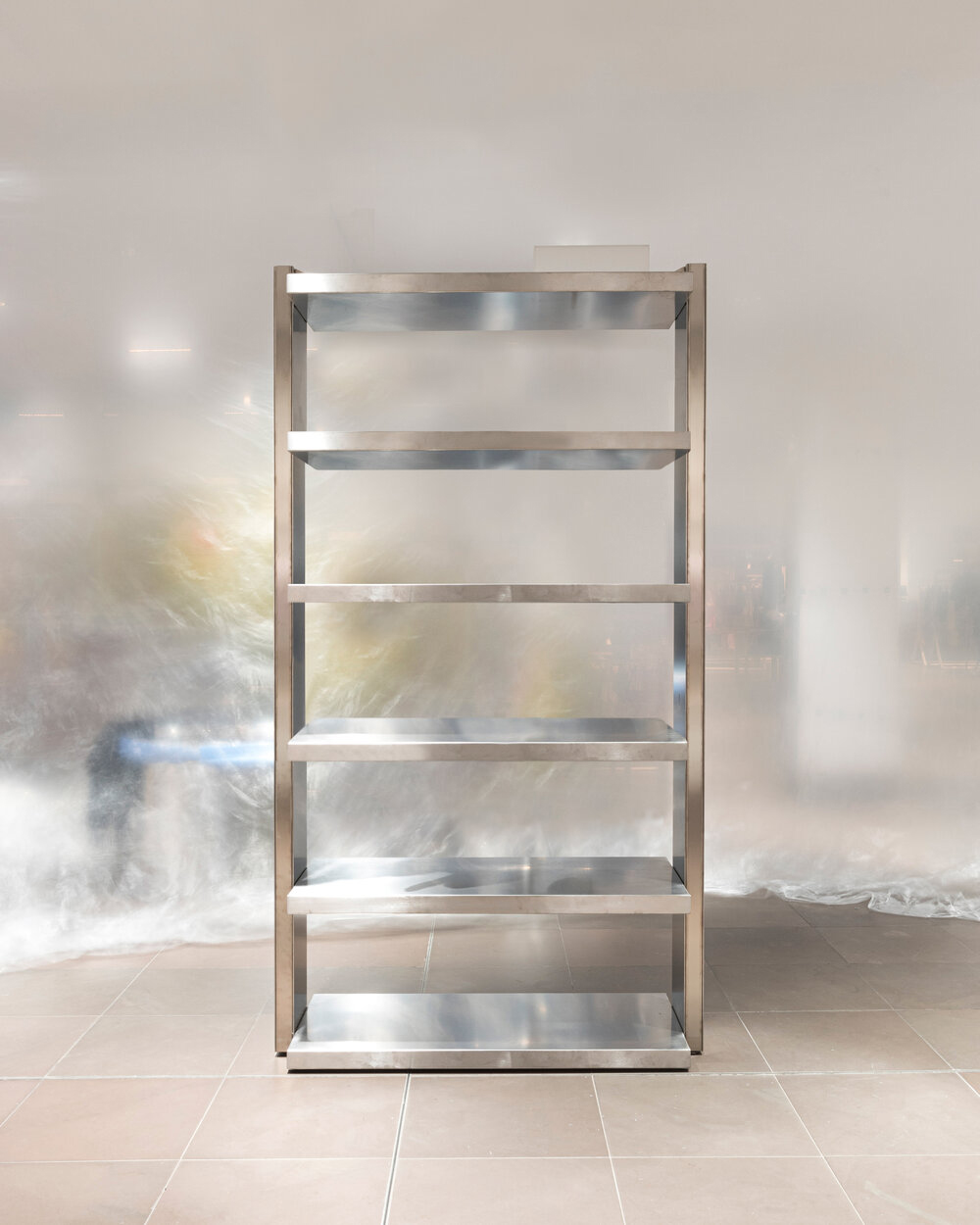
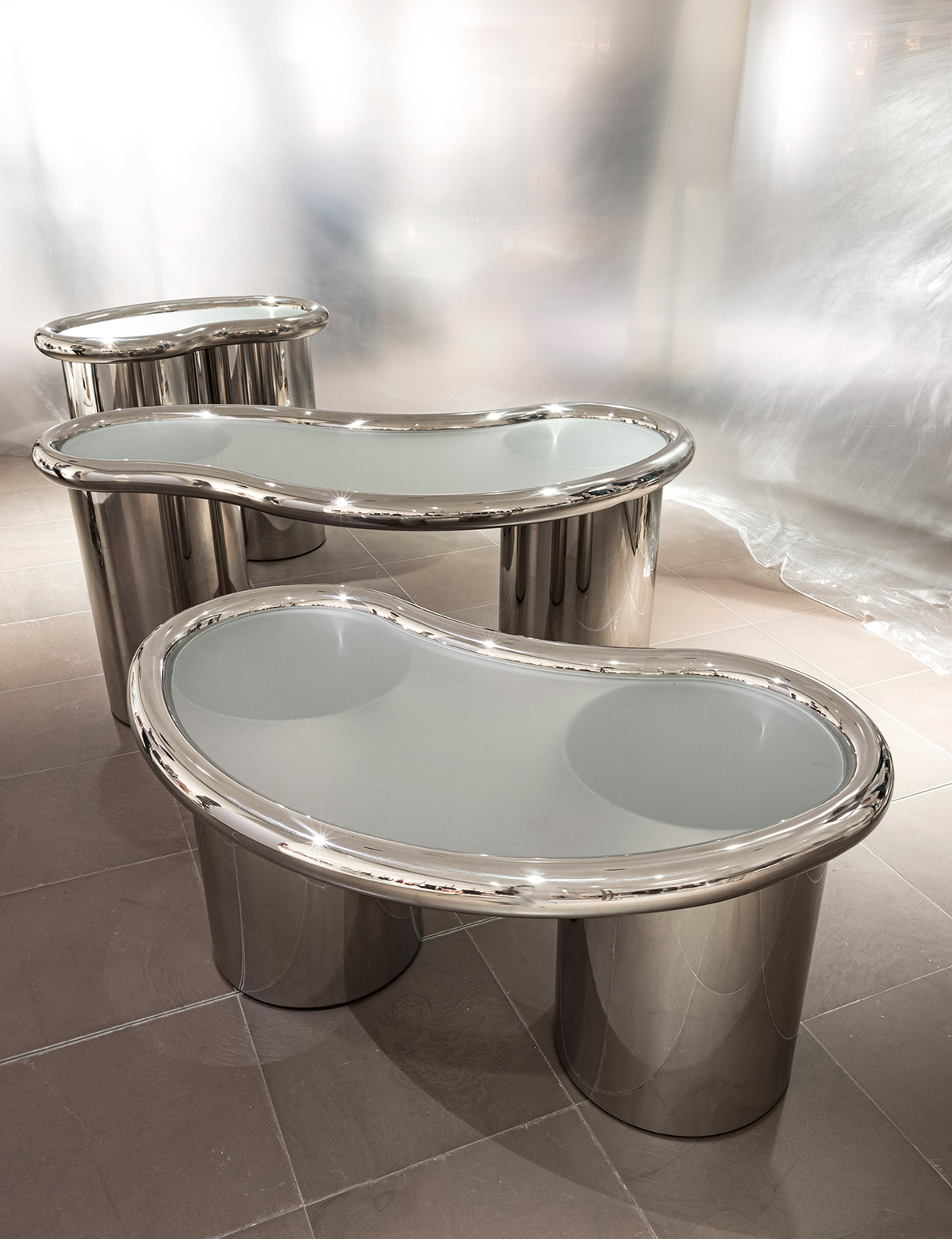

Let’s talk about that collection a bit more, because it has a really interesting adaptability aspect to it and it works easily with different configurations of the store. Can you just explain a little bit more the sort of design process and the concepts behind it?
Cara: For Rinascente we had three different areas all next to one another. The first one was shop-in-shop space, so we had the opportunity to work on walls, floors, and furniture. And the other two areas were central areas, so they had to be more adaptable. One was an event space, so it had to be able to change throughout the year, and the other area was for emerging brands.
For the emerging brands’ concept, we wanted to visually express the idea of a state of being emerging. So we contrasted very organic shapes with pieces that had more rigidness to them. The material palette was very cold, which we related to a lab-like aesthetic because these types of organic specimens happened in a laboratory, which is something we wanted to visually express with super cold materials like, brushed and polished steel, to give it a tonality.
The third area, which was the event area, was the one that needed to change many times during the year. And it needed to adapt to brands that do everything from bridal wear to swimwear. So it was very challenging for us to create furniture that could do that, and at the same time meet all the requirements of the department store. Because usually when something is adaptable you have all of these bits and bobs lying around. That was a problem because they just get lost when they go into storage. So the idea there was to keep everything on the sales floor. Nothing goes to storage. We created this system of shelving that within with the skeleton of the furniture you can store the unused pieces and no tools are needed to break down or put together the pieces while allowing the greatest number of combinations with the least number of elements. Because of the adaptability, the aesthetic couldn’t dominate, so we used simple aluminum profiles and industrial elements.
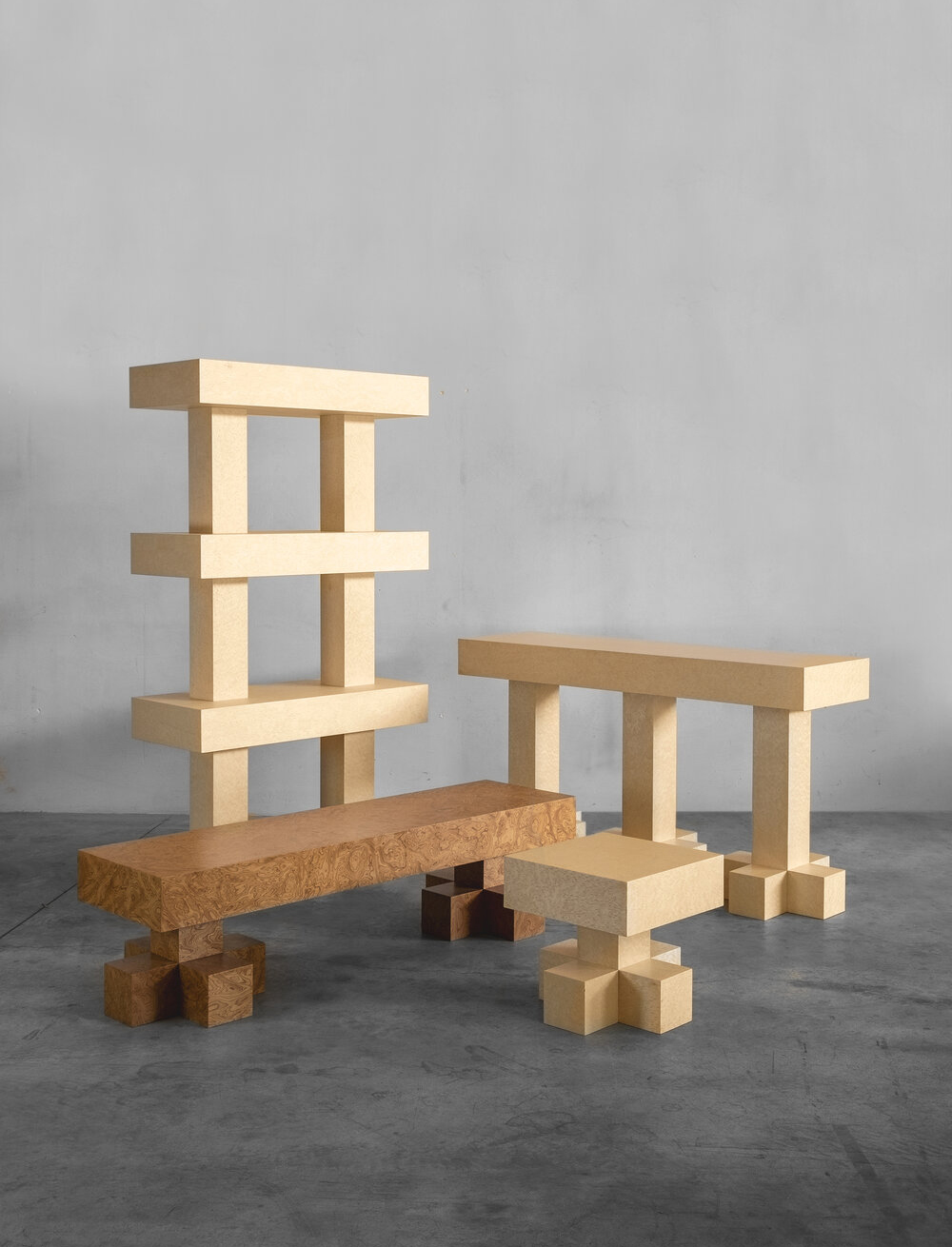
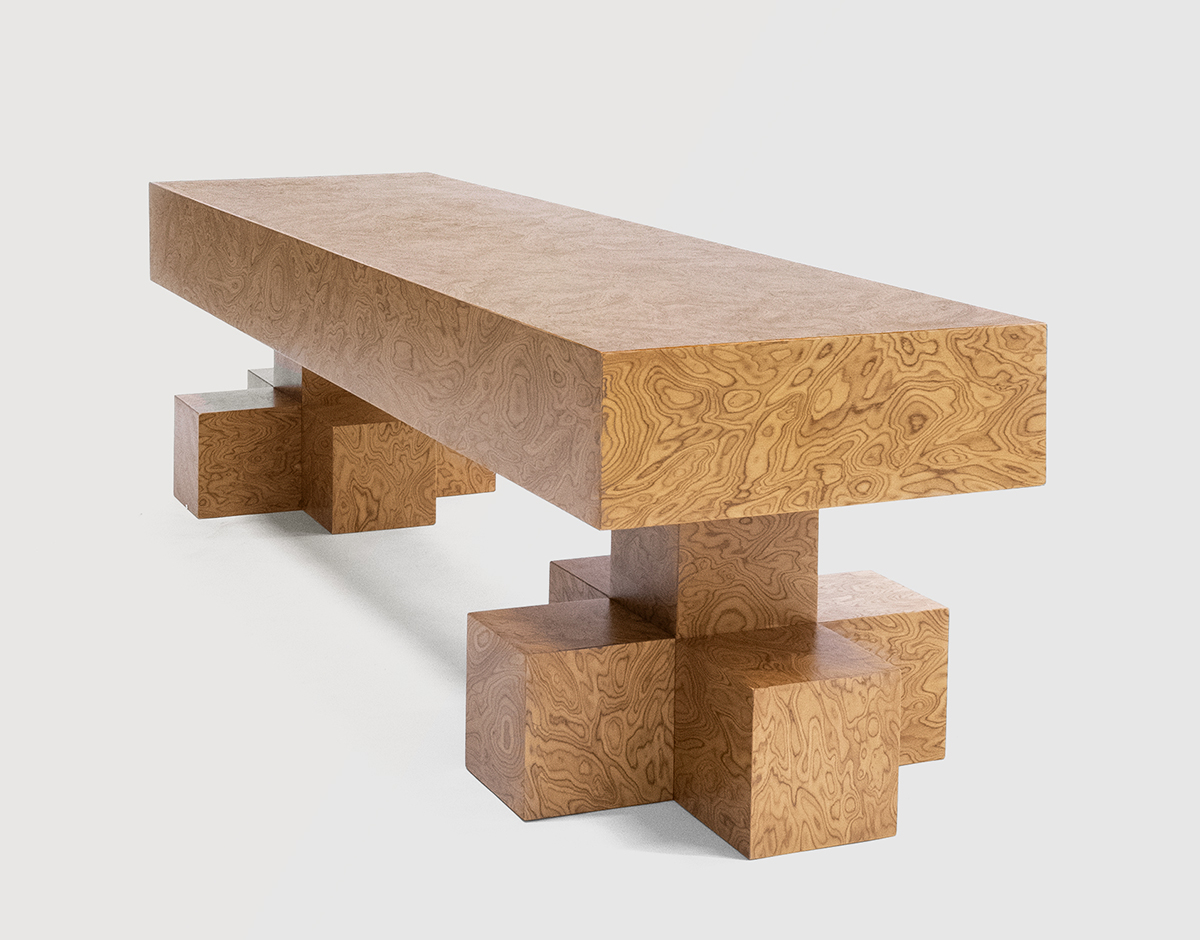
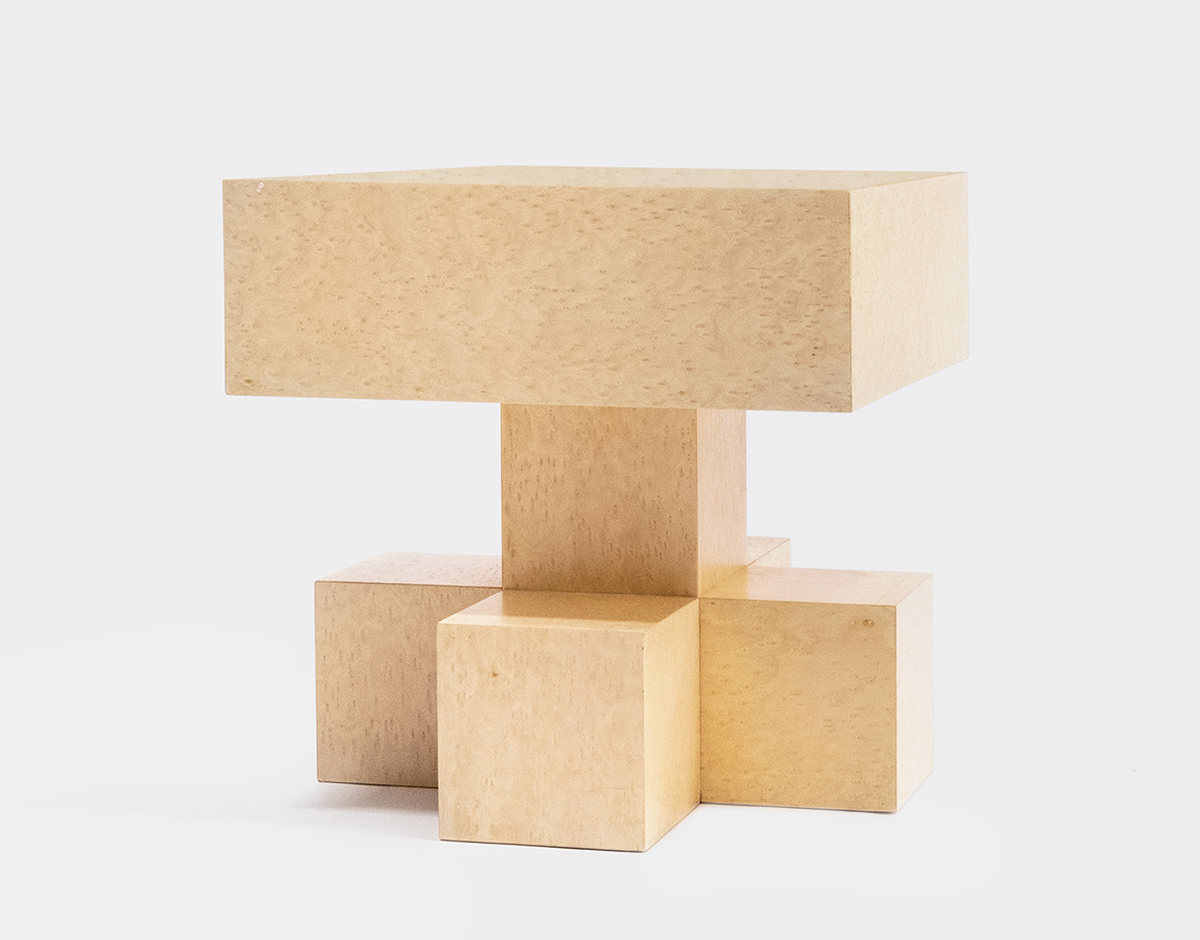
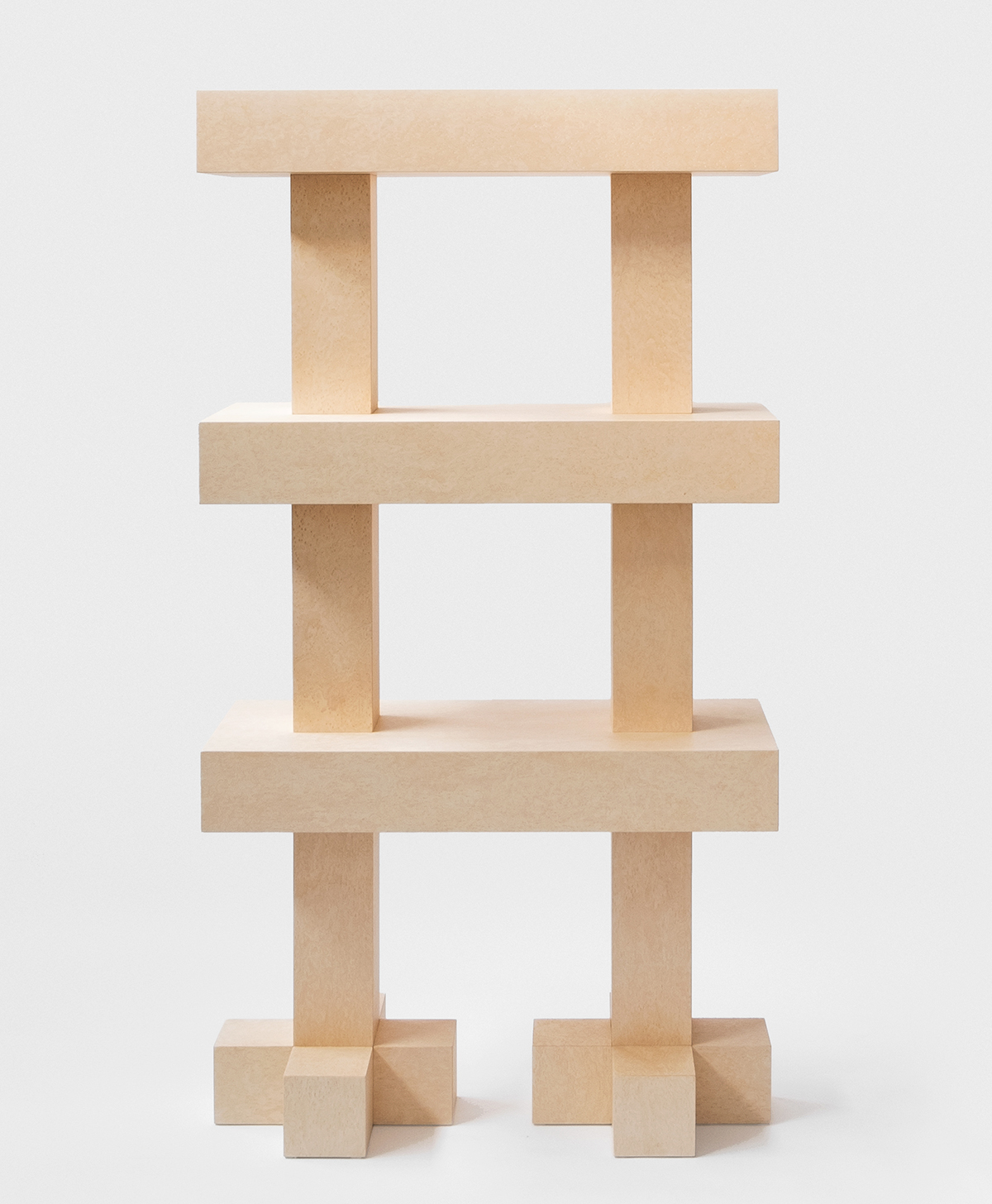
You also recently put out a collection with Medulum, a series of block-like furniture made of wood veneers resembling burl. Can you tell us about that collaboration?
Cara: This is the second collection that we designed for Medulum and every time that we go there and we start a new design with them it’s a wonderful experience. They’re based near Venice and the first time we visited, they took us out on the lagoon and showed us the area and their workshop and so on. Both times, this visit with them was basically the starting point of our collection.
Since they are a wood workshop and they are used to working with these veneers, we started from there. Their expertise is working with laminates, creating planar surfaces for kitchens and cupboards or other types of covers. The supplier is Alpi and they’ve done really amazing work in developing these technical veneers. The pattern is made through a process of layering different veneers — not on a flat surface, but on a wavy surface — and then slicing through it, so that’s why you get those different veins in it.
So the fact that Medulum’s expertise is in that area, we wanted to bring it through in our collection. So that’s why we worked with these solid looking blocks. Which are actually very light because they’re empty inside. So we exaggerated the dimensions of the structure so we could appreciate more the craftsmanship that goes into putting together two flat boards. Your eye may be drawn to the finish, but once you look closely you can appreciate the detail that goes into making it. Because it sounds so simple, but it needs to be done precisely. It seems simple to make block furniture, but the idea was to create a dialogue around the craftsmanship and the material.
Going forward into 2021, what are your plans?
Cara: There are a lot of ideas that we’d like the time to develop. One that can be summed up with some of the work that we’ve been doing over the years is what we call our aluminum studies, where we’ve been working on different aluminum objects. We’d like to do a small presentation on all of the ideas that have been leading up to now. Because of the whole COVID situation and because our work has slowed down a lot lately and we can’t visit artisans or travel, it has allowed us to think and reflect on what we’re doing. But also it has given us time to consider the importance to our process of designing. So we’re spending more time drawing and more time really looking into the details of things.
